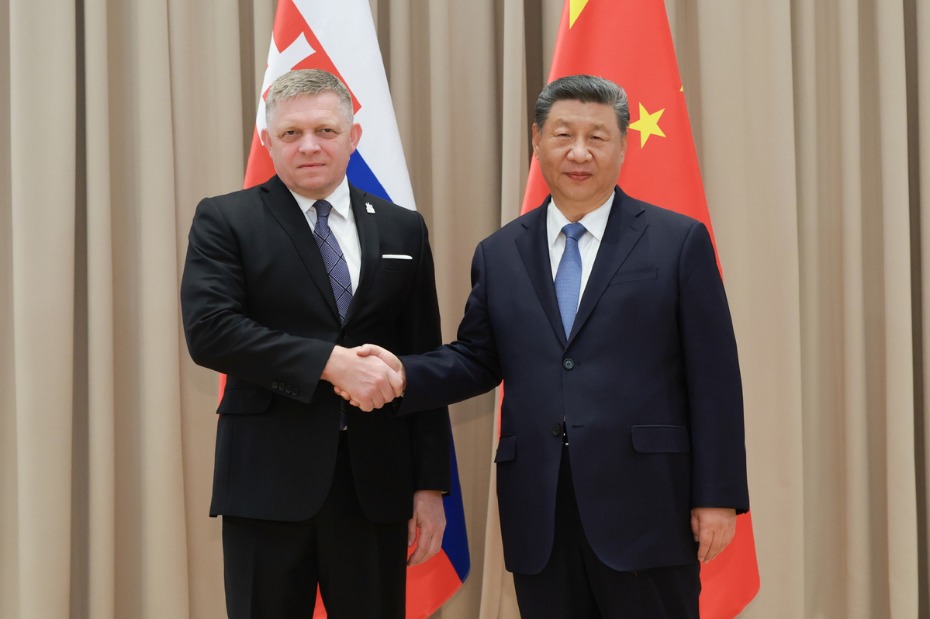To survive and thrive


China will continue to adopt initiatives to promote clean energy and international initiatives to foster better global environmental governance
The expansion of dryland is likely to be exacerbated in the future due to the world's growing population, and the associated increasing demand for water and food, and global climate change.
This makes it imperative to take action now. China can take a lead in the global goal of limiting or even reversing the impact of greenhouse gas emissions on all populations and the biodiversity on the planet.
China, which has the largest population, a huge area and comprehensive strengths, has successfully implemented several large-scale conservation and restoration programs to combat desertification, effectively greening much of its drylands. From 1980 to 2015, 45.76 percent of China's drylands experienced notable land improvement.
China has made a solemn commitment to the international community to peak its carbon emissions before 2030 and achieve carbon neutrality before 2060.President Xi Jinping made this pledge at the United Nations General Assembly.
Be it an ecological civilization, harmonious coexistence between man and nature, or green development and sustainability, these are hot topics in China.
Realizing the importance of clean energy, renewable energy and reducing carbon emissions, China is making great efforts to make the transition toward green energy, including increasing its hydropower and wind power generation capacity, thus becoming an important leader in global renewable energy.
China has also made low-carbon environmental protection an important goal for the upcoming Winter Olympic Games in Beijing. It is ensuring that shopping bags meet national regulations for being degradable, while as many as 30 hydrogen buses and delivery drones are providing green transportation guarantees.
Construction of the Olympic villages is being completed in a short time, reducing dust, garbage and noise at the construction site by 90 percent, while 70 percent of the construction materials used are recycled. In terms of green sustainability, all three Olympic villages meet the three-star standard for green buildings. Even the power supply is green, with wind power and solar power being used to power the Beijing and Yanqing venues of the Beijing Winter Olympics. These initiatives are models for all industries in China, as the country moves to reduce its dependence on carbon-based fossil fuels.
From another perspective, these efforts are in line with President Xi's proposal of building a community with a shared future for mankind. Humans are just one part of Earth's rich biodiversity, but have a huge impact on other life on the planet. We must better assume the responsibility of environmental protection and green development, for the well-being of all life on Earth. Extreme weather events, global warming, biological extinctions and other phenomena are all strong signals nature is sending to remind us that we have only one home and we need to take care of it. How we develop on this precious planet and how to improve the current natural environment should be the focuses of attention for people all over the world.
As China develops new policies for social improvement, fiscal and monetary methods should be used to ensure that climate and biodiversity are at the heart of the new financial structures. Financial constraints and rigid environmental regulations need to be effectively implemented to ensure that polluting industries consume less energy and pollute less.
As such, the authorities can achieve the goal of ensuring a balanced development of the economy and ecology while not falling into the dilemma of a maturity mismatch of investment and financing.
In the future, it is vital for China to mobilize its scientists and economists to collaborate with other scientists and economists around the world and persuade them to work closely with politicians and policymakers at home and abroad to ensure that human populations survive and thrive in the centuries to come.
James Crabbe is a supernumerary fellow at Wolfson College at Oxford University and Emeritus Professor at the University of Bedfordshire. Yue Xiaoguang is an adjunct professor of the European University Cyprus and an elected fellow of the Pakistan Academy of Engineering. The authors contributed this article to China Watch, a think tank powered by China Daily. The views do not necessarily reflect those of China Daily.
































